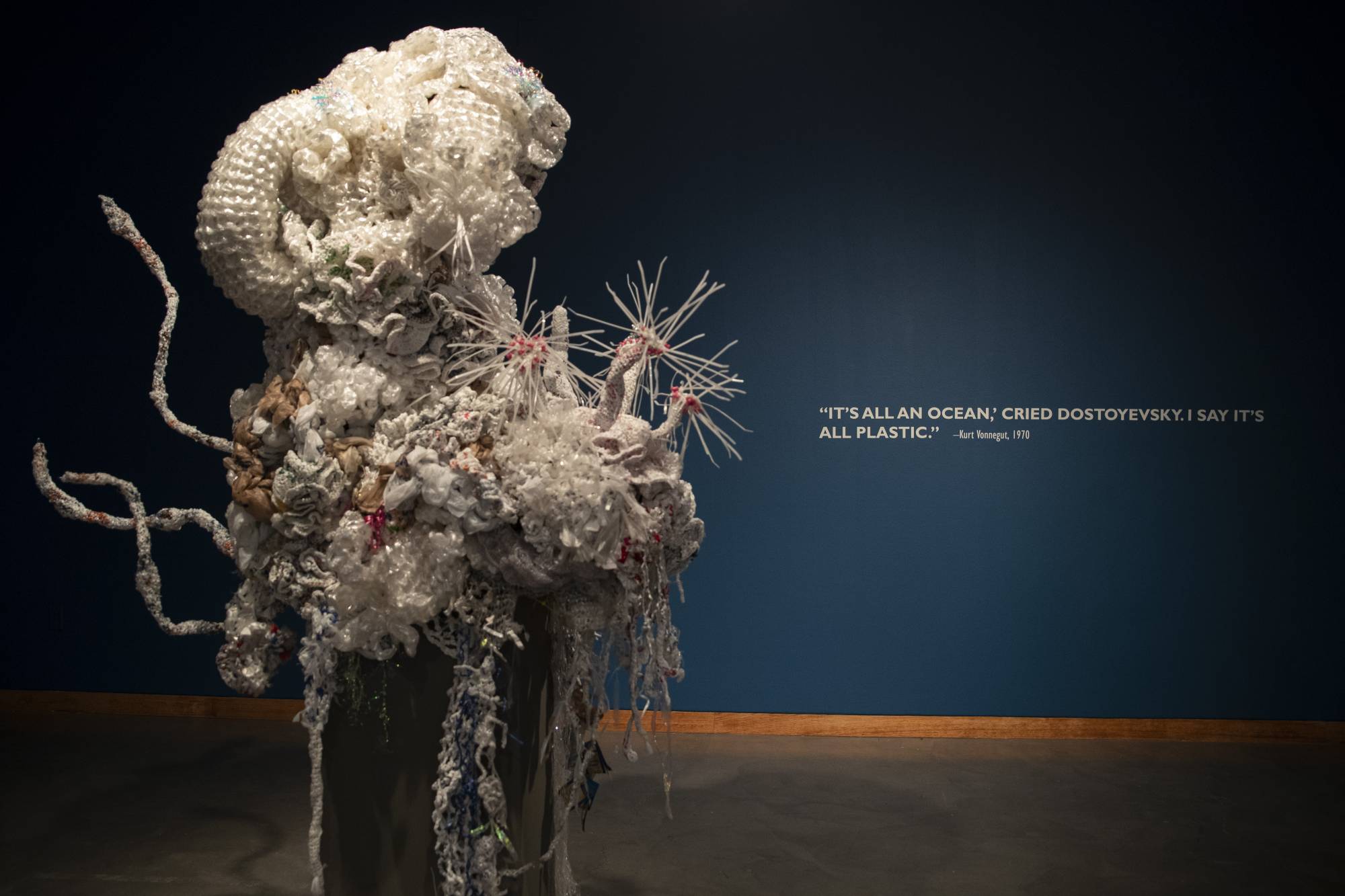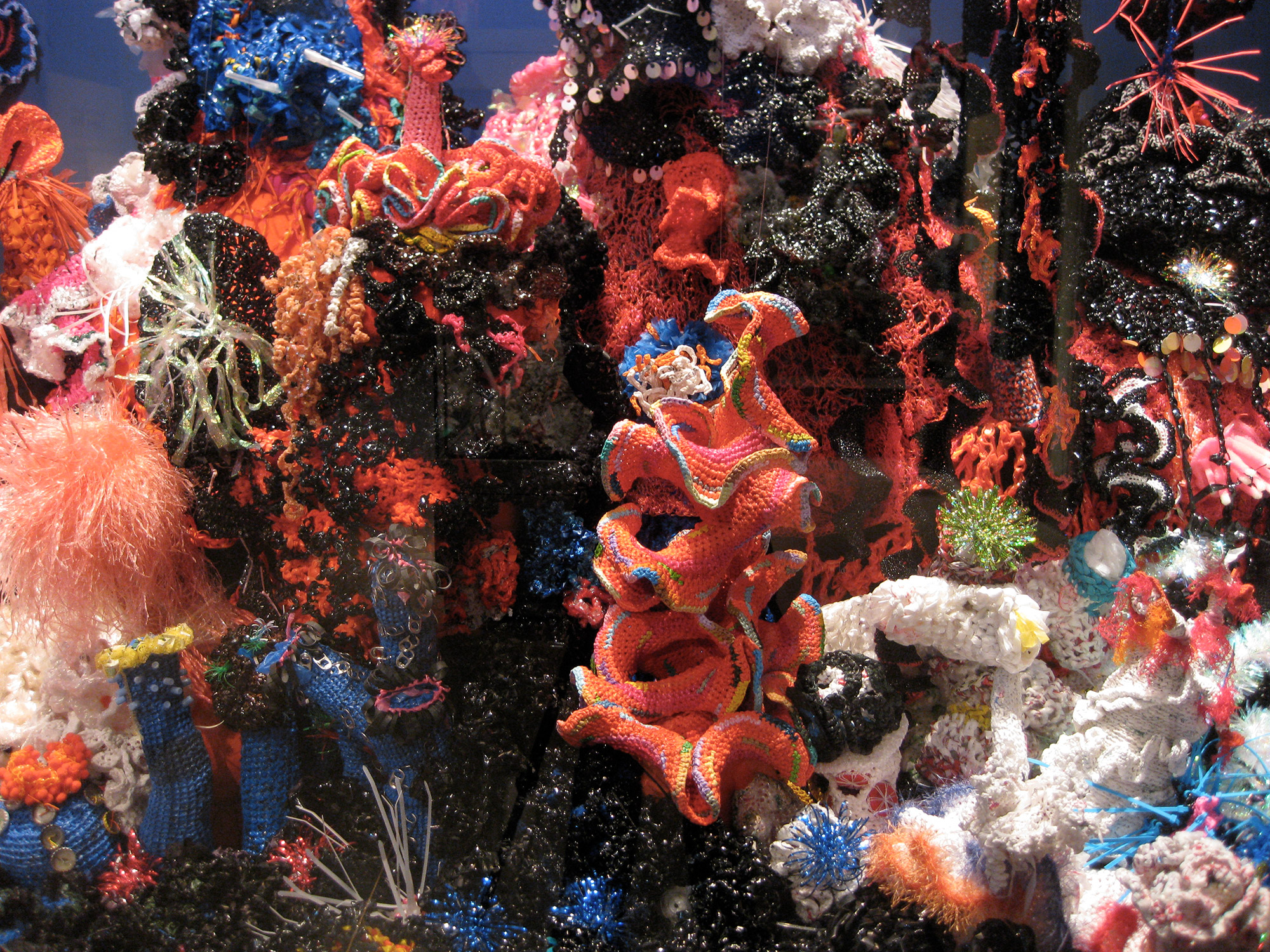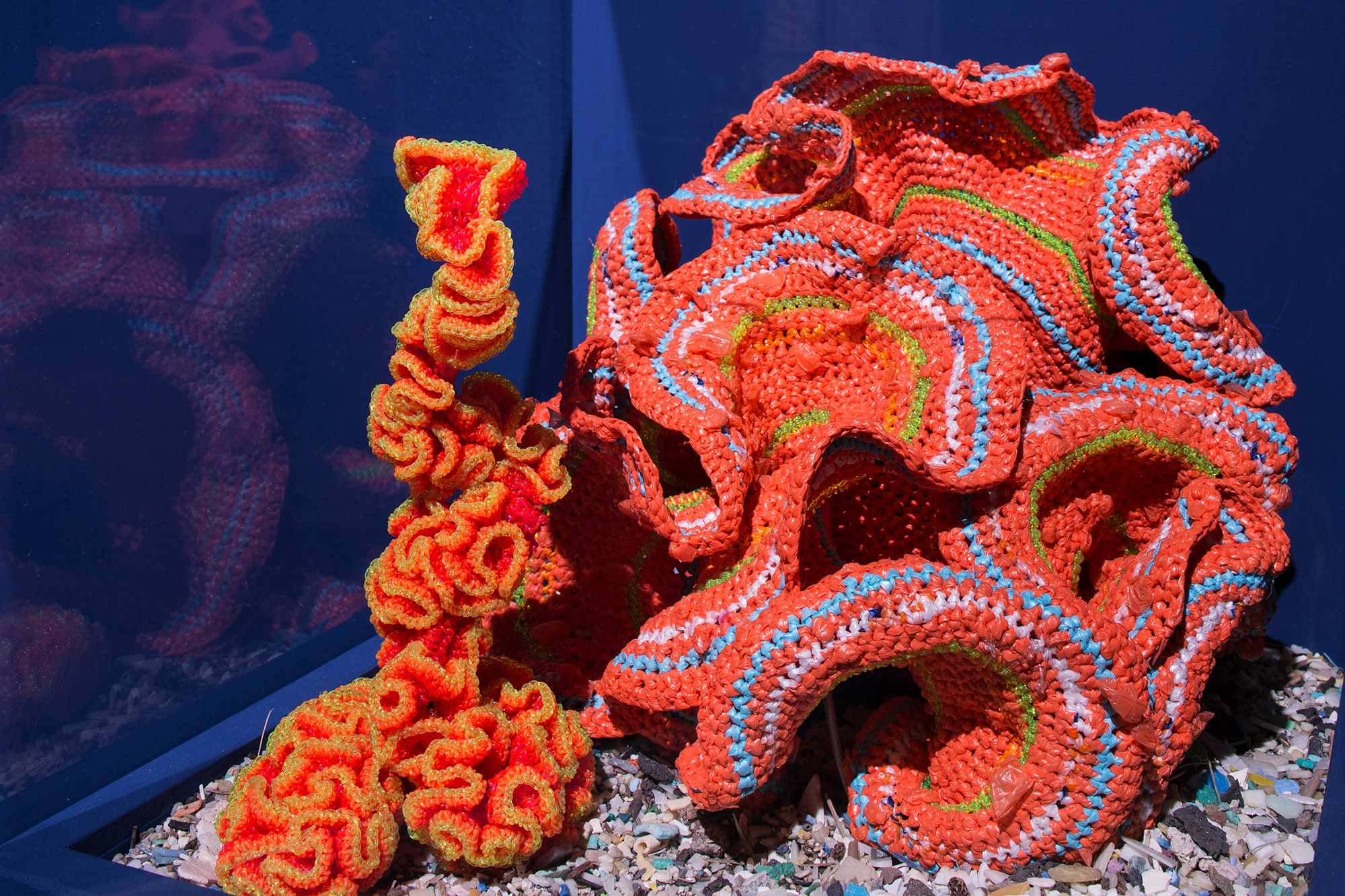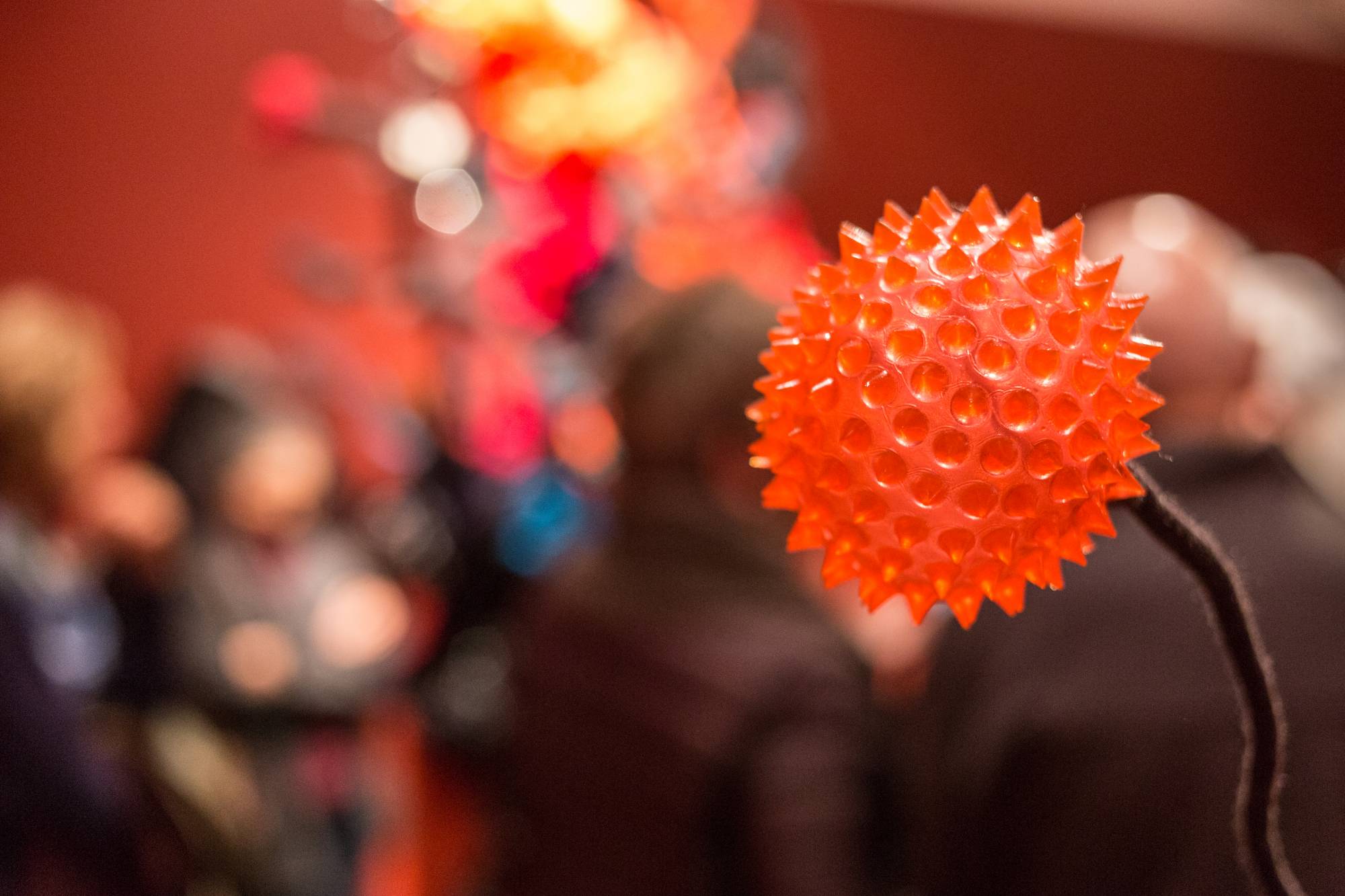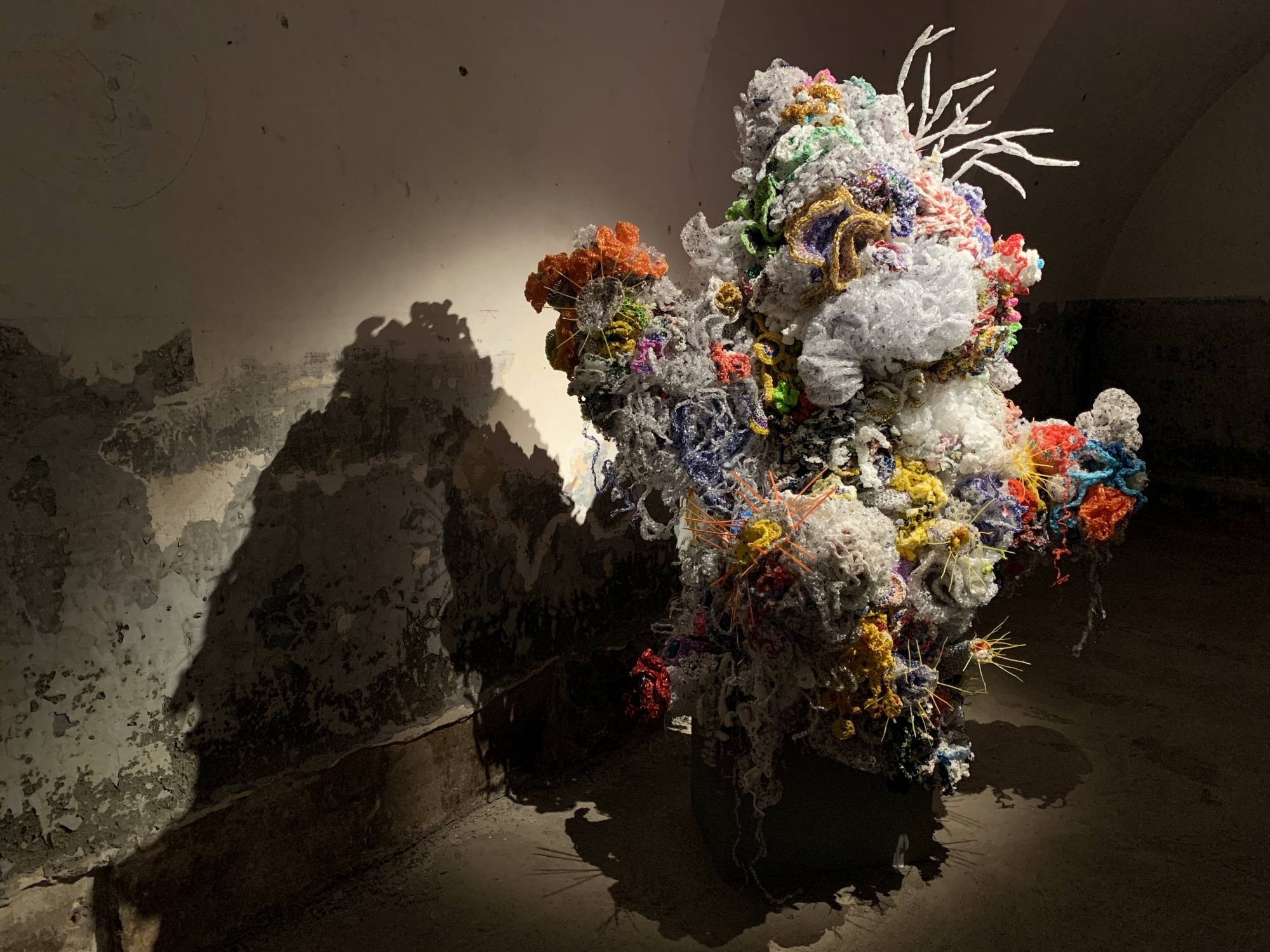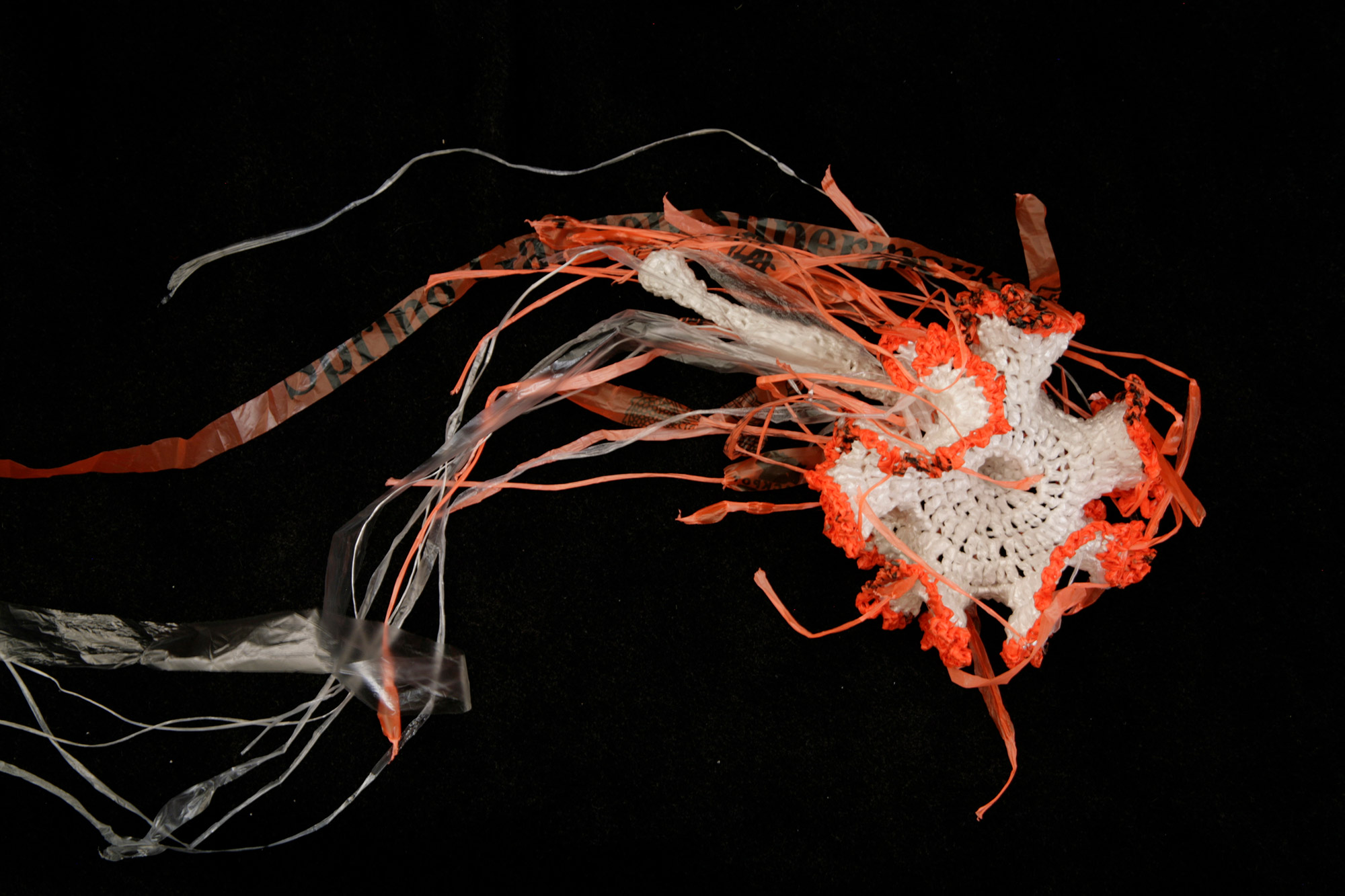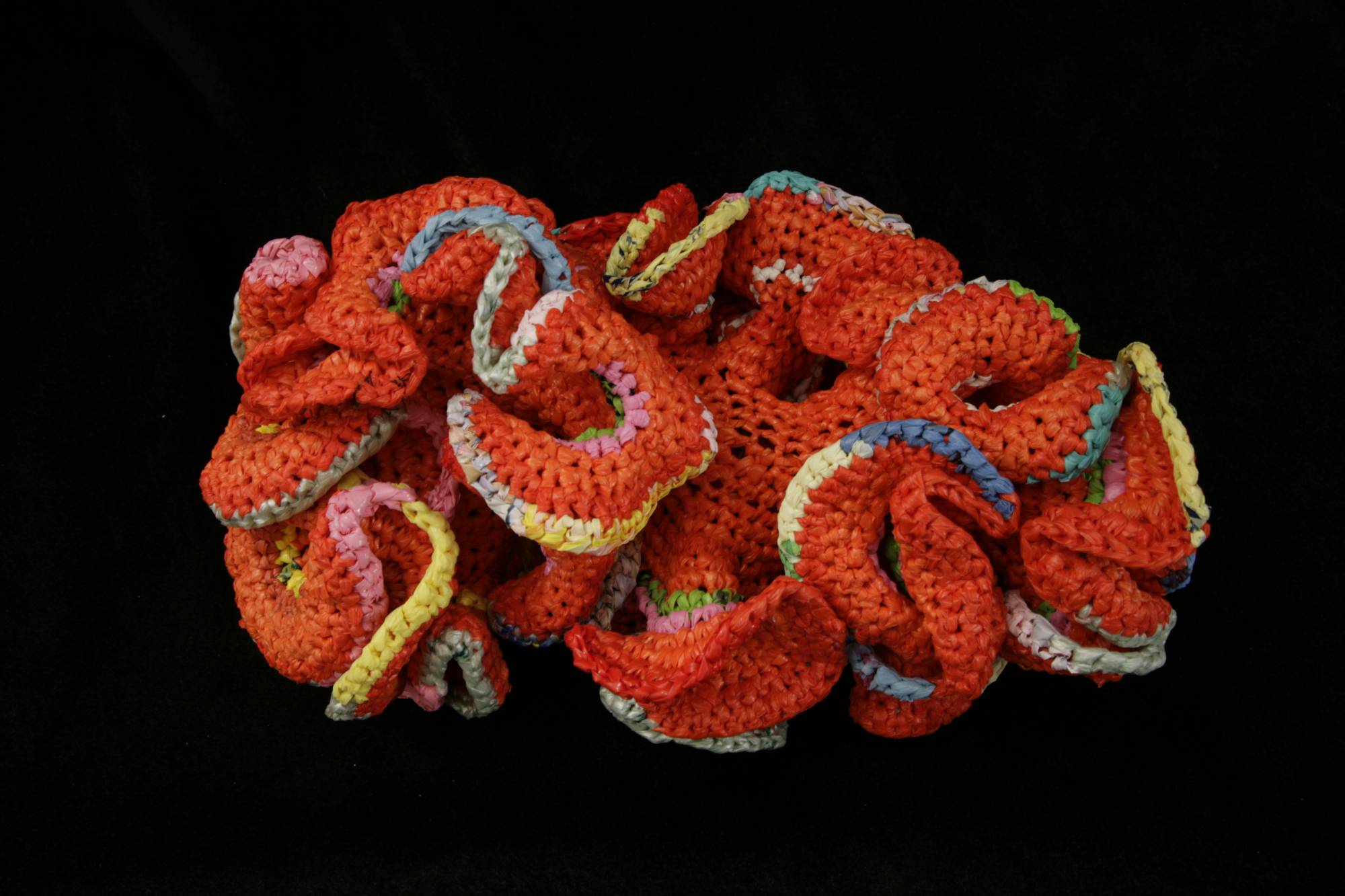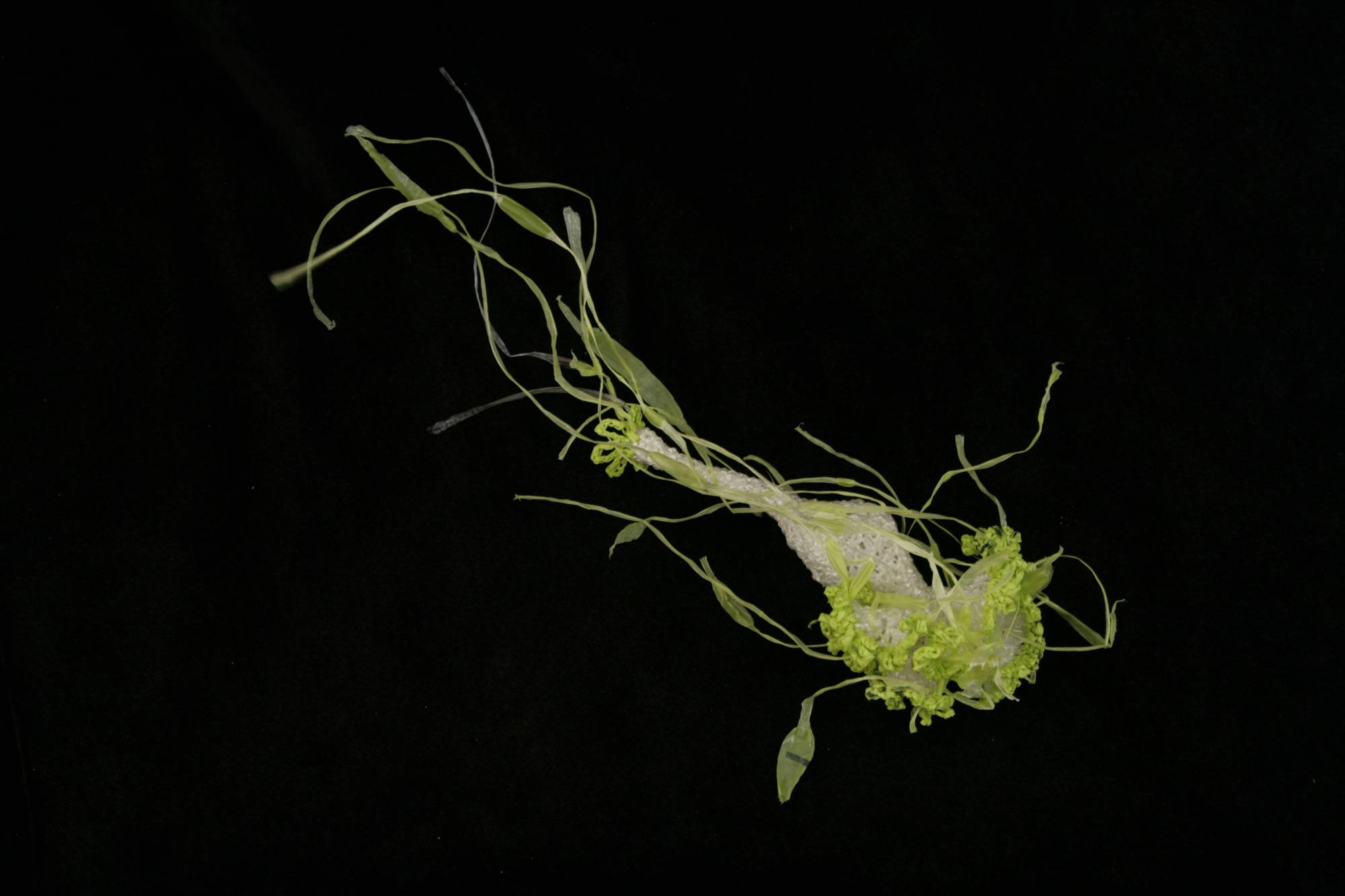Crocheting Plastic
As living reefs disappear, our oceans are filling with plastic. In response to this cataclysm, the Crochet Coral Reef also has a plastic section. Cut-up shopping bags, video tape, cable ties and plastic coated wires are some of the materials incorporated into the project. Where the yarn reefs reference the organic beauty of nature, the plastic reefs point to the post-modern present and oil-ensorcelled future we are replacing it with.
Plastic yarn made from shopping bags, or “plarn,” isn’t an easy medium to work with. For a start, one has to cut up the bags, a tedious task that puts off many “reefers” who’d rather enjoy the tactile grace of natural fibers. Yet plastic has its own powers and there’s a perverse pleasure in discovering new kinds of plastic products to crochet. Shopping bags, for instance, come in a remarkable array of kinds – stretchy, slinky, powdery, crackly, brittle – and experience reveals to the alert crafter whether any particular bag will crochet up well. Word to the wise: biodegradable bags disintegrate rapidly and do not lend themselves to artwork longevity
Video-tape, coated in toxic oxides and hard on the hands, isn’t a medium for the faint-hearted, yet its glittery finish and shimmer burst into vitality under gallery lights. Saran wrap lends itself beautifully to finger crochet, while electroluminescent wire – designed for military applications such as laying out remote desert airfields – can be crafted into bioluminescent sea-creatures. This remarkable material was introduced into the project by Bay Area media artist Eleanor Kent, who crocheted it into glowing, flashing corals.
There is a delight in repurposing refuse that the Reef project revels in. Among the Wertheim’s own rubbish they have woven into their Reefs are plastic bottle caps, pill capsules, hair ornaments, Christmas tree decorations, styrofoam trays, and shampoo bottles. The sisters’ Toxic Reef – a sibling to their Bleached Reef – is crocheted from white plastic and yarns along with video tape and tinsel, forming a black and white confection that sits of on a bed of sand scattered with plastic medical waste, ring-pull tops, and glitter. In earlier incarnations, the Toxic Reef was strewn across gallery floors in a profusion of rubbishy heaps.
The Wertheim’s interest in plastic however extends beyond the aesthetic into their daily lives, leading to a project they call The Midden, in which they saved all their own domestic plastic rubbish for 4 years – now exhibited as an artwork in its own right.
A recent innovation is a collaboration between the Wertheims and crafters of the Helsinki Satellite Reef. During 2020/2021, 3000 Finns crocheted a huge swathe of recycled plastic coral, curated into 4 towering Coral Forest sculptures for the Helsinki Biennial, a stunning installation whose elegant forms bely the sinister creep of oceanic plastic pollution.
Slideshow images featuring models by the following contributors.
- Black plastic coral by Siew Chu Kerk
- Coral Forest – Helsinki, a collaboration between the Wertheims and Helsinki Satellite Reefers
- Electroluminescent wire corals by Eleanor Kent and Margaret Wertheim
- Plastic corals by Christine Wertheim and Kathleen Greco, lying on a bed of “plastic sand”, gathered from the Great Pacific Garbage Patch on Kamilo Beach, Hawaii, by Captain Charles Moore.
- Coral Forest – Ea, detail of harvested trash
- Coral Forest – Ea, detail of glowing throw-ball
- Coral Forest – Helsinki, a collaboration between the Wertheims and Helsinki Satellite Reefers
- Coral Forest – Ea, at Lehigh University Art Galleries
- Coral Forest – Chthulu, detail of video-tape anemones and kelps by Christine Wertheim and Evelyn Hardin
- Plastic bin-liner jellyfish by Margaret Wertheim
- Coral Forest – Helsinki, a collaboration between the Wertheim and Helsinki Satellite Reefers
- Plastic bin-liner jellyfish by Margaret Wertheim
- Orange plastic-bag coral by Siew Chu Kerk
- Plastic bin-liner jellyfish by Margaret Wertheim
